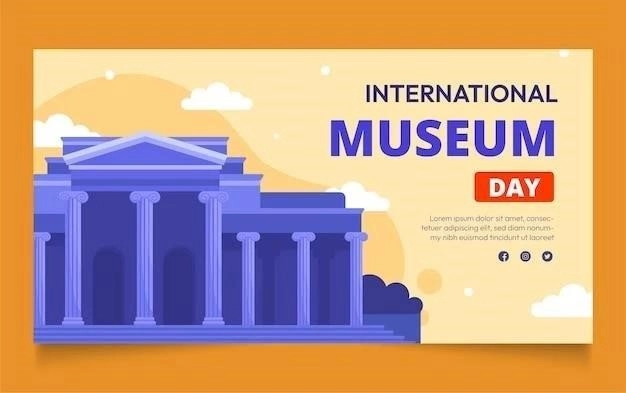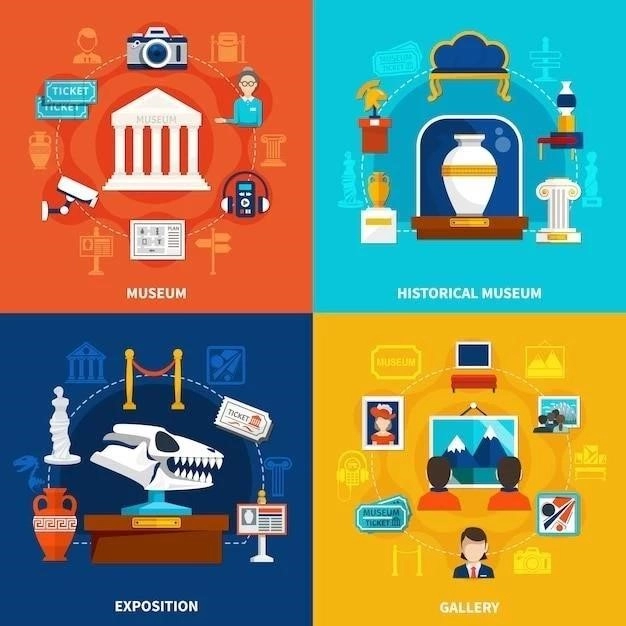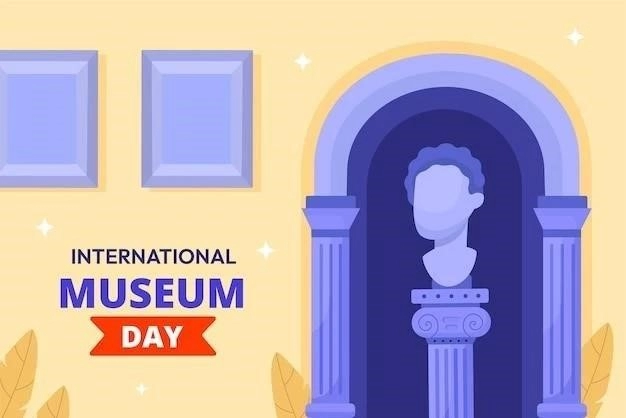The Hermitage Museum‚ nestled on the banks of the Neva River in St․ Petersburg‚ Russia‚ stands as an awe-inspiring testament to artistic grandeur and historical legacy․ More than just a museum‚ it is a palatial complex‚ once home to Russian emperors‚ now housing a collection of over 3 million artifacts spanning centuries and continents․ This article delves into the heart of the Hermitage‚ exploring its history‚ collections‚ and the invaluable treasures it safeguards for the world․

A History Steeped in Imperial Patronage
The genesis of the Hermitage Museum can be traced back to 1764‚ when Catherine the Great‚ Empress of Russia‚ acquired a significant collection of paintings from the Berlin merchant Johann Ernst Gotzkowsky․ This marked the beginning of what would become one of the most impressive art collections ever assembled․ Initially housed as a private collection within the Winter Palace‚ Catherine aptly named it the “Hermitage”‚ derived from the French word “Ermitage”‚ meaning “place of solitude”․
Over the ensuing decades‚ the Hermitage’s collection grew exponentially through acquisitions‚ gifts from foreign dignitaries‚ and even wartime spoils․ Catherine’s successors‚ driven by a passion for art and a desire to solidify Russia’s place on the world’s cultural stage‚ continued to enrich the museum’s holdings․ Notable additions include collections of ancient artifacts‚ European masterpieces‚ and treasures from the East․
The Hermitage opened its doors to the public in 1852‚ transitioning from an exclusive imperial collection to a museum accessible to all․ This pivotal moment democratized art appreciation in Russia and cemented the Hermitage’s status as a national treasure․

A Tapestry of Collections
The Hermitage’s collection is nothing short of breathtaking in its scope and diversity․ It is divided into several departments‚ each dedicated to a specific era or artistic genre․ Some of the most noteworthy collections include:
1․ Western European Art
Arguably the museum’s most renowned collection‚ it boasts masterpieces from the Renaissance to the early 20th century․ Visitors can marvel at iconic works by Leonardo da Vinci‚ Raphael‚ Michelangelo‚ Titian‚ Rembrandt‚ Rubens‚ Van Dyck‚ Monet‚ Renoir‚ Cézanne‚ Van Gogh‚ Matisse‚ and Picasso‚ to name but a few․ The collection offers an unparalleled survey of Western art history‚ showcasing the evolution of styles‚ techniques‚ and artistic movements․
2․ Ancient Egyptian Art and Antiquities
The Hermitage houses a remarkable collection of ancient Egyptian artifacts‚ including sarcophagi‚ mummies‚ statues‚ reliefs‚ and papyri․ These objects offer insights into the beliefs‚ rituals‚ and daily life of one of the world’s oldest civilizations․ The collection is particularly renowned for its collection of Late Period sarcophagi and its holdings of Coptic textiles․
3․ Prehistoric Art and Cultures
This collection takes visitors back to the dawn of human civilization‚ showcasing artifacts from the Stone Age‚ Bronze Age‚ and Iron Age․ Highlights include Scythian gold treasures‚ nomadic art from the Eurasian steppes‚ and artifacts from ancient Greek colonies on the northern Black Sea coast․ These objects provide a glimpse into the lives and cultures of the people who inhabited the vast territories of what is now Russia․
4․ Russian Art
The Hermitage’s collection of Russian art is a testament to the country’s rich artistic heritage․ It includes icons‚ paintings‚ sculptures‚ and decorative arts from the 12th century to the present day․ Visitors can trace the evolution of Russian art from its Byzantine roots to the avant-garde movements of the 20th century․ Key highlights include icons by Andrei Rublev‚ portraits by Dmitry Levitsky‚ and landscapes by Isaac Levitan․

Navigating the Hermitage
With millions of objects housed within a sprawling complex of six buildings‚ navigating the Hermitage can seem like a daunting task․ Here are some tips to make the most of your visit:
- Plan ahead: Purchase tickets online to avoid long queues․ Familiarize yourself with the museum’s layout and prioritize the collections you wish to see․
- Guided tours: Consider joining a guided tour to gain deeper insights into the museum’s history and collections․
- Audio guides: Audio guides are available in multiple languages and offer detailed information about specific artworks and exhibits․
- Pace yourself:* Allow ample time for your visit․ Even a cursory exploration of the Hermitage’s highlights will require several hours․
- Take breaks:* The Hermitage offers several cafes and restaurants where visitors can rest and refuel․

The Hermitage Today: A Global Cultural Hub
Today‚ the Hermitage Museum stands as one of the world’s leading cultural institutions‚ attracting millions of visitors each year․ Its commitment to preserving and showcasing its vast collection‚ coupled with its engaging exhibitions and educational programs‚ ensures that the Hermitage remains a vibrant center for art appreciation and historical exploration․
The Hermitage’s impact extends far beyond its physical walls․ The museum actively engages in international collaborations‚ loans its masterpieces to museums around the globe‚ and utilizes digital platforms to make its collections accessible to a wider audience․ In an ever-evolving world‚ the Hermitage Museum remains a steadfast beacon of artistic excellence and cultural diplomacy․










